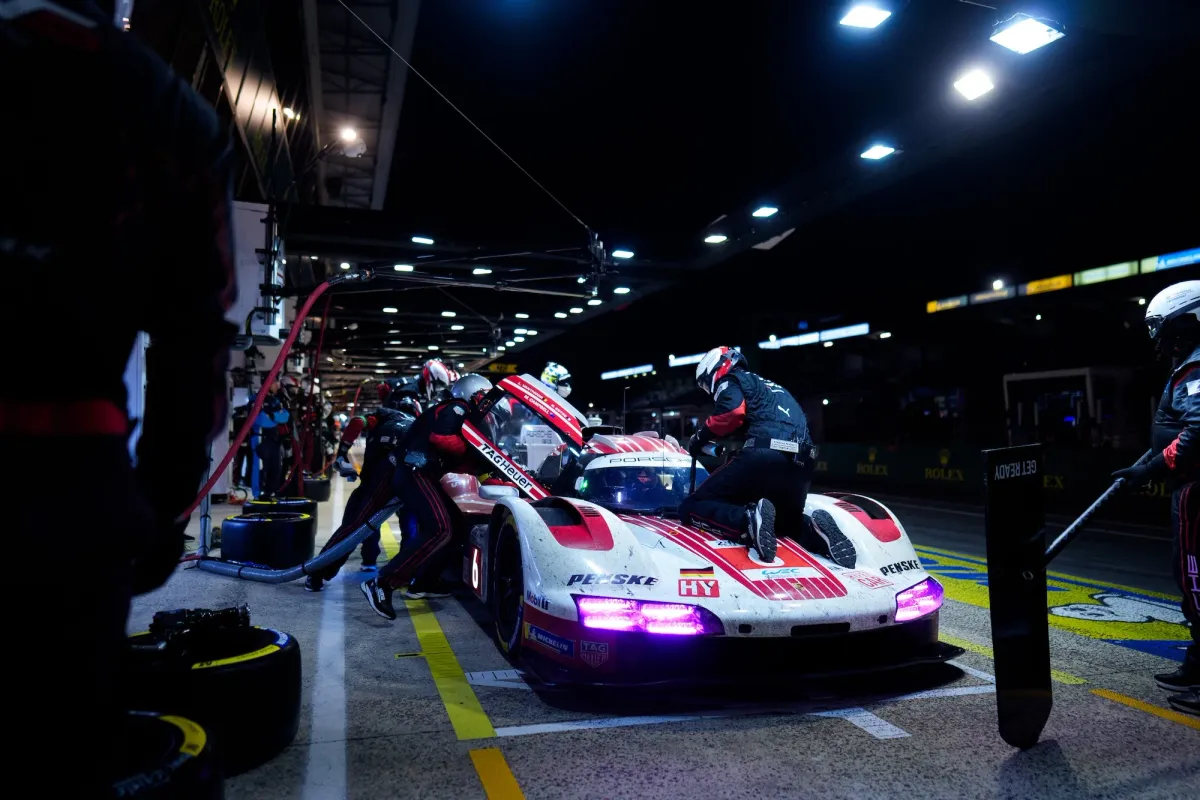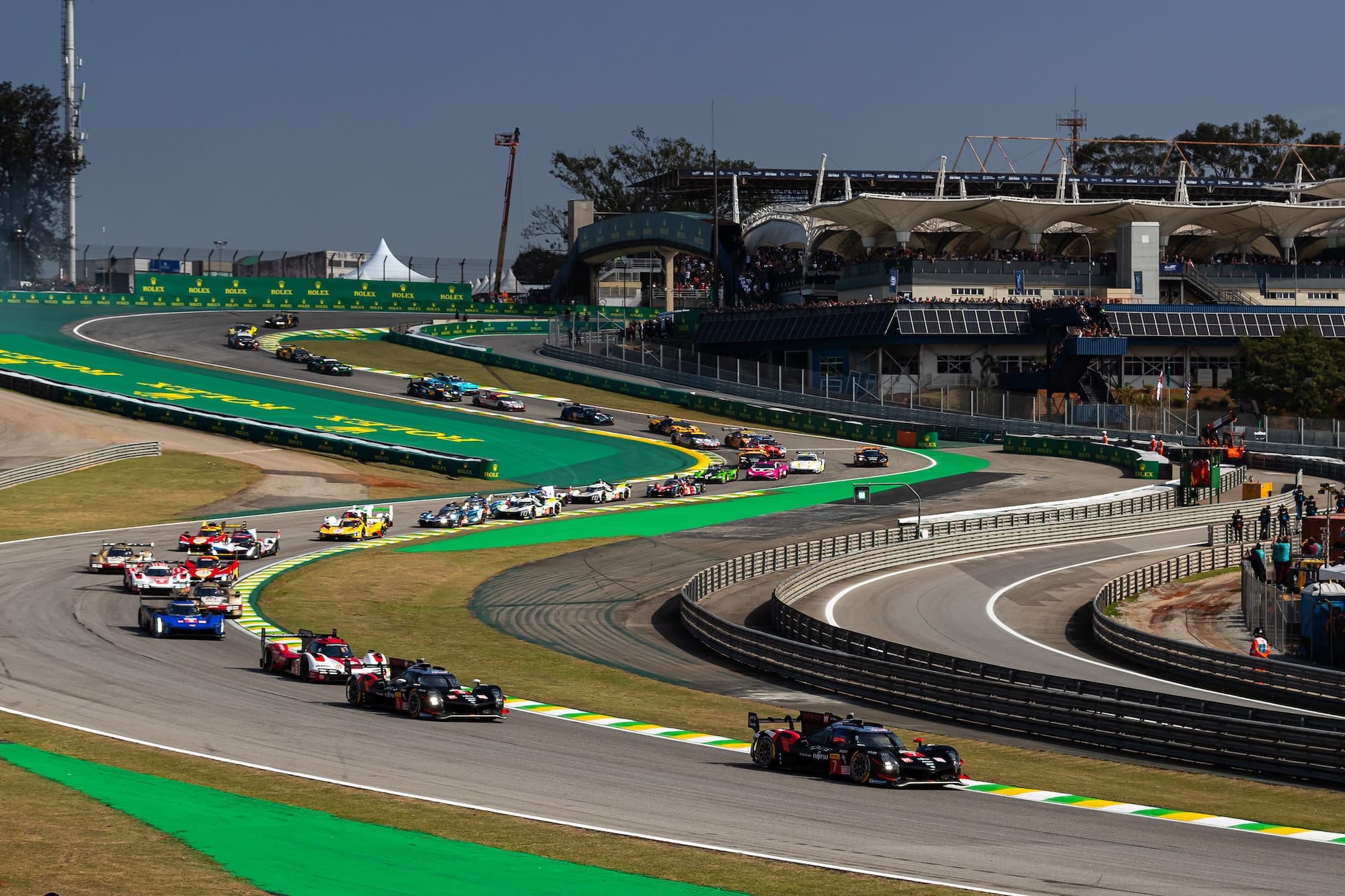Download The Racing Line on iOS today and get 70% off a year's subscription!
With Ferrari winning all four races this year and arguably becoming 'the team to beat' over former holders of that title, Toyota, they've got a target on their back in the FIA World Endurance Championship.
It's no surprise, then, that they've been heavily pegged back for the next round in Brazil, the 6 Hours of Sao Paulo, at Interlagos in Brazil.
Weight
Ferrari now have the joint-heaviest car, along with Toyota, at 1069kg. This is 11kg heavier than the BMW, at 1058kg.
The Porsche 963, which struggled in the first three rounds of the year but came good at Le Mans and was tantalisingly close to winning, beating both factory Ferraris but coming up short against the 'customer' #83 car, will be on 1053kg, 12kg heavier than at Le Mans but 2kg lighter compared to Spa.

The Alpine will be 2kg lighter than the Porsche, on 1051kg, while Cadillac sees a weight increase of 3kg compared to Le Mans, on 1040kg.
Both Peugeot and Aston Martin will be on 1030kg, the lightest the cars can go as per the Hypercar regulations. This is the same weight as at Le Mans for the Aston, but 5kg lighter compared to Spa, while the Peugeot saw a weight increase at Le Mans, of 9kg, but now returns to its pre-Le Mans weight.
Power (before 250kph)
Along with its high weight, the Ferrari 499P now has the lowest pre-250kph power of any car on the grid, at 480kW. Toyota's only 5kW higher, down massively from Le Mans but actually up compared to Spa.
Porsche are 16kW higher than Toyota on 501kW, with BMW on 505kW, Alpine on 512kW, and Cadillac on 516kW. Peugeot and Aston Martin are both on 520kW, with Aston having been on 520kW since Spa. Peugeot's power dropped significantly for Le Mans, but otherwise has been on 520kW all season.
Support Only Endurance's independent sportscar journalism today from £1/$1/€1 a month
Power (after 250kph)
Once again, the table in part reverses itself when the post 250kph power figures are applied.
Whereas before the changes were applied, Toyota and Ferrari had the lowest pre-250kph power, once they hit that speed, Toyota will have almost the best, just slightly below Aston Martin.
Ferrari, meanwhile, will have the third best.
Cadillac have probably got the best deal here – they've got the third highest power before 250kph, and the third highest after, just slightly below Ferrari. Combine that with low weight...
Porsche will sit on 503kW after 250kph, with Peugeot next then Alpine the lowest on 483.8kW.
However, there's only two places the teams can really use this at Interlagos - the banked last corner and main straight before turn 1, and the run to turn 4 out of the Senna S.
Energy per stint
Ferrari's stint energy continues to drop, as it has for most of the season, along with Alpine's. Ferrari will have 893MJ to use over a stint, while Alpine will have 1MJ less.
Aston Martin will have by far the most, on 919MJ. Porsche, Cadillac and Toyota have very similar figures, 905MJ to 903MJ, while Peugeot will have897MJ to use over a stint.
Power-to-weight ratios
OK, so the interesting bit. Cadillac look to be in the pound seat here, with high power-to-weight in both scenarios, pre-250kph and post.
Ferrari may struggle for pace at Interlagos. They've got low PTW in both scenarios, and a heavy car is a big disadvantage at Interlagos. As the track has multiple slow speed corners, especially in the second sector, you want a nimble car that doesn't understeer. With Ferrari's high weight that might be tricky. We'll have another article out soon assessing their chances in Brazil.
However, Cadillac's downfall might be tyre wear. While the V-Series.R can be fast over a lap, as we saw at Le Mans with Alex Lynn's magnificent pole, the car chews through tyres faster than its rivals. And, at Interlagos, tyre deg can be high anyway, traditionally quite high, especially on the new-for-last-year surface.
Our prediction? Cadillac qualify well but fall off during a stint. Toyota did well here last year, but this was partially because they had data from when they raced at Interlagos in WEC from 2012-2014, whereas other teams did not.
That's not to say Toyota won't do well here. The GR010 Hybrid is a great car that gets pegged back by BoP. Don't be too surprised to see them run up front.
But we could also see Porsche do well here, as well as Alpine and BMW, both of whom have been improving a lot this year despite mediocre at best performances at Le Mans.
Feature image: DPPI / WEC
Download The Racing Line, your personalised motorsport calendar, on iOS today to get up to date session times and customisable notifications for over 150 different series, including single seaters, sportscars, rally, bikes, and much more.



